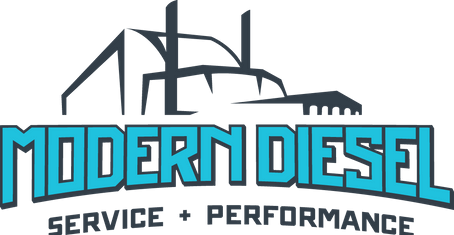Hello, fellow diesel enthusiasts! I’m Kary from Modern Diesel in Austin, Texas. Today, I want to shed some light on a topic that often puzzles many diesel truck owners: Diesel Particulate Filter (DPF) regeneration. Understanding how your DPF works and how to maintain it can save you time, money, and keep your truck running smoothly.
What is a Diesel Particulate Filter (DPF)?
A DPF is a component in your truck’s exhaust system designed to capture and store soot and other particulate matter produced during diesel combustion. Over time, this filter accumulates soot, which needs to be burned off to prevent clogging—a process known as regeneration.
Types of DPF Regeneration
- Passive Regeneration: This occurs naturally when the exhaust temperature is high enough, typically during highway driving, to burn off the soot in the DPF.
- Active Regeneration: When the soot level reaches a certain threshold, the engine control unit (ECU) initiates active regeneration by injecting extra fuel to raise the exhaust temperature and burn off the soot.
- Forced Regeneration: If the DPF becomes too clogged and passive or active regeneration can’t occur, a technician must perform a forced regeneration using specialized diagnostic tools to clean the filter.
Common DPF Regeneration Problems
-
Frequent Regeneration Cycles: If your truck is regenerating too often, it could indicate issues like a faulty sensor, excessive idling, or short trips that don’t allow the exhaust to reach the necessary temperature for passive regeneration.
-
Failed Regeneration: Sometimes, regeneration doesn’t complete successfully due to problems like a malfunctioning fuel injector, turbocharger issues, or software glitches in the ECU.
-
Clogged DPF: Ignoring regeneration issues can lead to a completely clogged DPF, resulting in reduced engine performance, increased fuel consumption, and potential engine damage.
Solutions and Maintenance Tips
-
Regular Driving at Highway Speeds: Ensure your truck gets enough highway driving to allow passive regeneration to occur naturally.
-
Avoid Excessive Idling: Long periods of idling can prevent the exhaust from reaching the temperatures needed for regeneration.
-
Use Quality Fuel and Oil: High-quality diesel fuel and engine oil can reduce the amount of soot produced, easing the load on your DPF.
-
Scheduled Maintenance: Regular check-ups with a trusted diesel mechanic can catch potential issues early and keep your DPF functioning properly.
-
Professional Cleaning: If your DPF becomes too clogged, professional cleaning or replacement may be necessary to restore optimal performance.
Final Thoughts
Understanding your DPF and how regeneration works is crucial for maintaining your diesel truck’s performance and longevity. At Modern Diesel in Austin, we’re here to help you navigate these complexities and keep your truck running at its best. If you have any questions or need assistance with your DPF or any other diesel-related concerns, don’t hesitate to reach out.
Stay safe on the roads!
Best regards,
Kary
Modern Diesel – Austin, Texas

Add a Comment